MRV vs. IMO Regulations
New Regulations
Ship owners are currently dealing with recent regulations applied to maritime industry, such as MRV Regulation which entered into force on 1st January 2018. After a period of development and assessment of each vessel’s Monitoring Plan (until 31st December 2017), companies are, at this stage, gathering data from fuel types consumed on board, their respective impact on the environment, and vessel´s activity data (transport work, distance travelled, hours underway, cargo carried, energy consumption, among others).
This stage which goes until the end of the present year corresponds to the reporting period. Completed this period, companies have until 30th April 2019 to submit an emissions report to be verified by an accredited entity. Once the emissions report is verified, the company receives a Document of Compliance (DOC) which has validity for 18 months and has to be carried on board. This document proves the conformity of the vessel regarding the imposed MRV Regulation and prevents the company from any possible penalty.
Penalties can go from small dissuasive and proportionate sanctions to the possibility of prohibition from entering EU ports in case of failing to comply for two or more consecutive reporting periods. This regulation has implications only in EU ports and considers only ships with 5000 GT or higher, ships for commercial purposes (carrying passengers or cargo), regardless of the flag or country of the shipowner. People are still adapting to this recent regulations, although there is still much more to come.
On May 2015 IMO MEPC (Marine Environment Protection Committee) 68 agreed on a three-step approach to enhance the energy efficiency of ships. It comprises a data collection step, followed by data analysis and ending in decision-making on what further measures can be done. In this context, IMO established a “Data Collection System” (DCS) for fuel oil consumption as part of a roadmap for developing a comprehensive strategy for the reduction of GHG emissions from ships. For this approach IMO MEPC developed several resolutions and guidelines:
On 1st March 2018, amendments to MARPOL Annex VI, Regulation 22A on fuel oil data collection of ships came into force. From the calendar year 2019, each ship of 5,000 gross tonnages and above shall collect the data specified in appendix IV of Annex 3 MEPC 70/18 and the processes that will be used to report the data to the ship’s administration.
Reported data should be transferred to the IMO Ship Fuel Oil Consumption Database via electronic communication (THETIS Platform) and using standardized form (Appendix 3 of Annex 10-MEPC 70/18). Each ship to which regulation 22A applies must present before 31st December 2018 an updated SEEMP (Ship Energy Efficiency Plan) that ensures the methodology and processes prior to the beginning of the vessel first reporting period. There are two parts of a SEEMP:
Part I
Provides a possible approach for monitoring the ship and fleet efficiency performance over time and some options to be considered when seeking to optimize the performance of the ship. In addition, many companies already develop, implement and maintain a Safety Management System. In such case, part I of the SEEMP may form part of the ship’s Safety Management System. SEEMP Part I might be seen as a tool to assist a company in managing the ongoing environmental performance of the vessels. In that way, it is recommended that a company develops procedures for implementing the plan in a manner which limits any on-board burden.
It should reflect efforts to improve a ship’s energy efficiency through four steps:
- Planning
- Implementation
- Monitoring
- Self-evaluation and improvement
It is important to notice that the improvement of energy efficiency of the ship’s operation does not necessarily depend on a single ship management. Rather it may depend on many stakeholders including ship repair yards, ship owners, operators, charterers, cargo owners, ports and traffic management services, among others. All involved parties should consider the inclusion of efficiency measures in their operations both individually and collectively. Some measures could be, for example, improve voyage planning, weather routing, speed optimization, optimize shaft power, optimum use of rudder and heading control systems (autopilots) or perform hull maintenance.
Part II
The part II, in another way, provides the methodologies ships should use to collect the data required pursuant to regulation 22A of MARPOL Annex VI and the processes that the ship should use to report the data to the classification societies or any organization duly authorized. The most relevant data to be collected is related to fuel oil consumption, distance traveled and hours underway. These new regulations do not focus on direct CO2 emission measurement, as it is imposed by the MRV Regulations.
Besides the collected data, companies should specify the vessel data (ship particulars and technical characteristics – gross tonnage, net tonnage, deadweight, power output of emission sources), IMO number and period of the calendar year for which the data is submitted. Along with the submission, companies should send documents, such as a copy of the Ship’s Data Collection Plan, summaries of BDNs with detail, summaries of disaggregated data, and information that proves the vessel follow the Data Collection Plan as set out in its SEEMP.
Fuel oil consumption should include all the fuel oil consumed on board including the fuel oil consumed by the main engines, auxiliary engines, gas turbines, boilers, and inert gas generator, for each type of fuel oil consumed, regardless of whether a ship is underway or not. Some methods to collect fuel oil consumption data would be: require to use of bunker delivery notes (BDNs), use of flow meters or use of bunker fuel oil tank monitoring on board.
Data related to distance traveled is related to distance traveled over the ground in nautical miles (recorded in log-book) while hours underway relate to the duration while the vessel travel underway under its own propulsion. The Data Collection Plan should include data quality control measures to be incorporated into the existing shipboard safety, namely a procedure for identification of data gaps and corrections, a procedure to address data gaps if monitoring data is missing (for example, flow meter malfunction).
- There are some exemptions in terms of the types of ships to which the regulations apply to. Ships engaged on domestic voyages, or ships not propelled by mechanical means and platforms, including FPSOs, FSUs, and drilling rigs are exempt from reporting;
- When a ship diverts from its scheduled passage to engage in search and rescue operations, it is also exempt from a per voyage monitoring.
The information required by these new regulations is anonymous and confidential. After the reporting period, as in comparison to the MRV, companies have to submit the report on fuel oil consumption data until 31st March 2020. Classification societies or duly authorized verifiers analyze the conformity of the report and until 31st May 2020 emit a Statement of Compliance related to fuel oil consumption that must be kept on board each ship. The Statement of Compliance shall be drawn up in a form corresponding to the model given in appendix X of MEPC 278(70) and shall be at least in English, French or Spanish. It is valid for the calendar year which it is issued and for the first five months of the following calendar year.
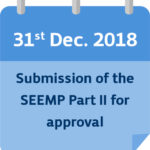
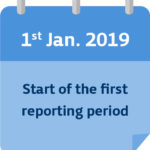
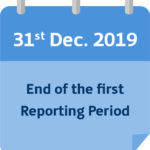
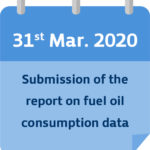
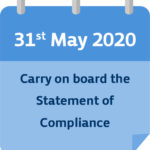
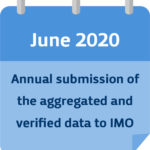
The similarities and differences between the MRV Regulation process and IMO-DCS can be resumed in the following table:
| EU MRV | IMO | |
|---|---|---|
| Monitoring | Ships 5000 GT and above voyages to/from EU port of calls; EU Monitoring Plan; Starting 1st January 2018. | Ships 5000GT and above; All voyages; Updated SEEMP; Starting 1st January 2019. |
| First monitoring period | 2018 | 2019 |
| Exemptions | Warships, naval auxiliaries, fish-catching/processing ships, ships not propelled by mechanical means and government ships used for non-commercial purposes | TBD |
| Parameters | Fuel Consumption and CO2; Actual cargo on board; Distance traveled; Time at sea and in port. | Fuel consumption and CO2; Design deadweight; Distance traveled over the ground; Hours underway. |
| Reporting | Fuel consumption (port/sea); Transport work (based on actual cargo carried); Distance; Time. | Fuel consumption; Distance; Time. |
| Verification | Independent accredited verifiers | Classification Societies/ Recognized Organizations |
| Reports to | European Commission | Flag State |
| Certifications | Document of Compliance | Statement of Compliance |
| Publications | Public Database | Anonymous Public Database |
| Disclosure | Public | Confidential |
As a conclusion of the facts mentioned above, ship owners need to take these regulations very seriously, as shipping is facing in a very short period of time a big green wave of requirements.
It is recommendable that ship owners select a classification society and/or accredited verifier for EU MRV and IMO-DCS, in order to utilize expected synergies between EU MRV and IMO-DCS system and overcome future penalties and burdens. Also, the resort to help from companies with accumulated knowledge in the sector is considered a valuable asset especially in terms of finding solutions to optimize the energy efficiency of the vessel, its fuel consumption, and operation.



